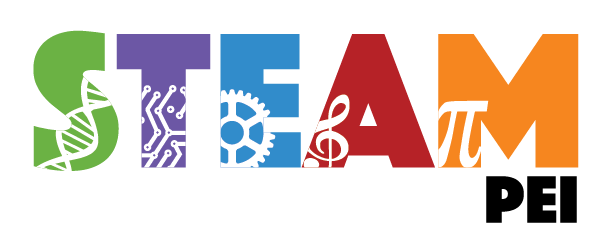README. ======= This document is set up as follows: Licensing information About the framework Style Guidelines Classes Methods Properties and fields Future goals Licensing information. ====================== The source code to the framework is provided to you free of charge and you may do with it as you see fit. This includes copying, altering, deploying, etc. By using any of the code provided in any way, you accept full responsibility for anything you do with it. Commercial support may be available in the future but the license will always remain open. The original author reserves the right to switch out the license to a proper opensource license in the future. About the framework. ==================== Hello and thanks for your interest in my little pet project! a demonstration of this codes' demo project is available at: http://www.private-void.com/ This framework is built from the ground up to provide a toolkit that meets these requirements: - make the safer, faster, better way to do something the easiest way to do it. - make it easy to do data access with prepared statements that prevent sql injection. - provide total localization and internationalization support - declarative programming where possible - make the no code way to handle user generated events a complete no brainer by using easy to remember conventions - seperation of controller logic from view code - make it incredibly difficult to put controller logic in a view while making it incredibly easy to do databinding to views - provide a very productive environment for producing highly specialized solutions. you can still do kitchen sink stuff, but the real power is in the expandability - standard form controls, including some fancy stuff with a solid base that can be used to build entire applications in a single tag or just allow you to build your own special type of button or textbox. - provide the core for a web based IDE for the web (my dream project) - build a web application where the application can be designed using a point and click UI that lets the designer do mockups that the programmer can just attach code to where needed - provide a standard way to "compile" all code and resources required for an application into one file to make deploys pushbutton easy - high code quality standards - make it easy to assert that documentation is available on all key elements of code during development (classes, properties, methods) - use modern, namespaced objec oriented code following clear guidelines and taking cues from the some of the best ideas out there including Apples' Cocoa and Microsofts System.Web.Forms (without getting into the religious thing of who does what best, they are both pretty awesome in their own way). - think global, act in local scope * note that when I say faster, I mean development time, not execution speed. Style guidelines. ================= 1. Naming your entities. Classes All class names are PascalCased (words contracted with each initial letter capitalised) Never shall the word 'public' be followed by whitespace and a dollar sign. (no public fields, ever. period.) this still applies if you want to put the word 'static' in between. Methods All method names are camelCased (words are contracted with the first letter of each word capitalized, except the first word.) Method parameters (argument names) Parameters shall be camelCased and typehinted where possible. They shall be mentioned in the methods' docblock using the @param annotation. Methods can contain variables, they too shall be named in camelCase. since methods inside methods are by definition private API, no mention of them is required, nor wanted in a methods docblock, but you should get into the habit of declaring them. Example code: namespace examples { use DateTime; use redObject; /** * Person represents a real-world person */ class Person extends Object; { /** * Holds this persons' birthdate * * @var DateTime */ private $birthDate = null; /** * Get the number representing the years between this Persons' date of * birth and today. * * @return integer */ public function getYearsOfAge() { // sanity check, require a birth date to be available $valid = assert($this->getBirthDate() instanceof DateTime); // set a default value $result = 0; if ($valid) { $now = new DateTime(); $interval = $now->diff($this->getBirthDate(), true); $result = $interval->y } // more sanity checking assert($result > -1); return $result; } /** * Determine if this person is 18y or older * * @return boolean */ public function isOverEighteen() { return $this->getYearsOfAge() >= 18; } } } #EOF This sample code shows how to use docblock, naming convention for classes, methods, fields and property accessors. It is not meant to be considered working code, the sample would get too long for this document. Working example code will be provided as part of the framework. Properties and fields Fields (instance variables that are not publicly visible) Fields may be either private or protected. We're outlawing public even if php supports that notion. Field names shall be camelCased just like method names Properties (Instance variables or concrete pieces of instance logic that are externally available through getters and/or setters) a propperty accessor can be either a getter or a setter and will have the following traits: Getters: the first word in the camelCased method name shall be 'get' for all properties that do not denote a non-nullable boolean, a situation where the first word shall be 'is'. Examples on a class Person: ----------------------------------------------- | Property name | getter accessor name | |=============================================| | string Firstname | getFirstName() | | boolean OverEighteen | isOverEighteen() | | integer Age | getYearsOfAge() | ----------------------------------------------- Setters the first word in the camelCased method name shall be 'get' for all properties. Examples on a class Person: ------------------------------------------------------------ | Property name | getter accessor name | |==========================================================| | string Firstname | setFirstName(MBString $firstName) | | boolean OverEighteen | setBirthDate(DateTime $date) | | integer Age | setBirthDate(DateTime $date) | ------------------------------------------------------------ the last two are obviously tricky in that the getters don't just pass around instance information but contain actual logic that works with the instance data. Future goals. ============= The eventual goal of this project is to create a web application to build web applications, until such time however, there are smaller goals to achieve. - working demonstration project "Addressbook" that exposes the frameworks built in address book - support many "standard" controls from buttons and textboxes to carousels and popovers - provide support for framework native request handling to supply framework resources - provide theming support - provide phar support - build a framework documentation website on this framework.
版权声明:
1、该文章(资料)来源于互联网公开信息,我方只是对该内容做点评,所分享的下载地址为原作者公开地址。2、网站不提供资料下载,如需下载请到原作者页面进行下载。
3、本站所有内容均由合作方或网友上传,本站不对文档的完整性、权威性及其观点立场正确性做任何保证或承诺!文档内容仅供研究参考学习用!
4、如文档内容存在违规,或者侵犯商业秘密、侵犯著作权等,请点击“违规举报”。


